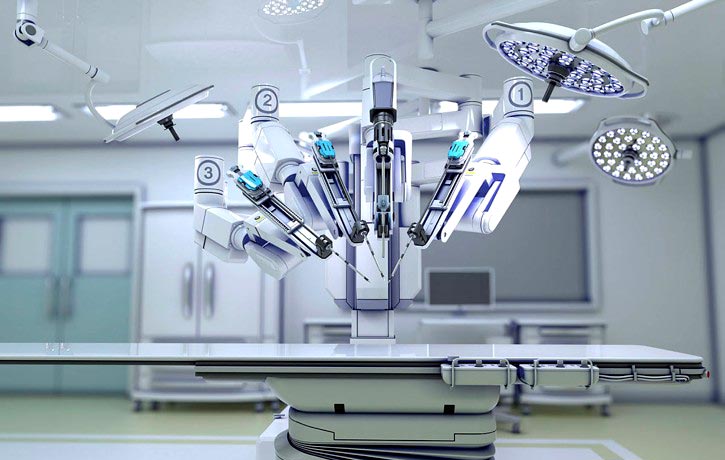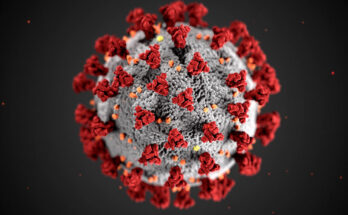Top 10 Medical achievements of the century. Image Courtesy – https://mastersetseq.com
The 21st Century brought various revelations, mix-ups, and restorative advances that have impacted solution from the patient’s bedside to the drug bureau. Pharmaceutical industry has also developed to a greater extent with numerous products of life-saving dugs. Remarkable inventions were executed in the field of medical instrument, machine, implant or similar articles which are very much useful in the process of diagnosis and treatment.
1. Discoveries of genetic material present in a human cell (Genome) and improvement in the effectiveness of health care.
Researchers of the International Human Genome Project discharged an unfinished version of the human genome to general society in the year 2000. Shockingly the world could read the complete set of human hereditary data and start to find what our about 23,000 genes do.
Mapping the human genome had turned into a competition of time and money in which two contenders are present at the cutting edge – one was the government-financed Human Genome Project, and the other was Celera Genomics , a private company. The government-financed project finished their task in 15 years with more than $3billion in tax-amount. But the private company which was financed with $100 million, took less than 10 years to complete.
While publishing the draft, Craig Venter, chief scientist of Celera Genomics said that it was the precursor for lots of medical advancement. He also said that he was hopeful that it would start to change things in future. Craig Venter was awarded the National Medal of Science for his work on human genome by US President Barack Obama.
Aspiration of Venter is very high on genomic research because he thinks that tremendous medical potential is awaiting to come with the help of this study. Not only preventive medicine, it will reduce our medical cost from our day-to-day expensive treatments. In his opinion, preventive medicine will be the area of our future treatment strategy. We will be able to find out the root cause of a disease by observing genetic study of a human being, and thus focus more and more to prevent disease. He informed that the scientists have already developed a genetic test for a specific gene responsible for prostate cancer, and also prepared a medicine which can lower the risk of prostate cancer in future.
2. Combination of Medical Science with Information Technology
Patients may not consider the involvement of information technology as they sign in with a pad and pen; they do not need to rush here and there, while medical attendants tackle their documents. Anyway specialists have the opinion that the Internet and data engineering has really changed their way of practice. Even specialists need to update their knowledge from time to time. Information technology has made life more secure for the patient. While admission into a health institute nowadays, patients get a bar code which coordinate with their specimen test and identity verification.
Healthcare professionals use sample testing (blood, urine, or other) to help diagnose ailment, survey wellbeing, and screen level of medication needed. Exact results can be produced from blunder free sample collection techniques. With this consequences implementation of bar-coding technology in healthcare institutes has been optimized as a practical solution.
Numerous doctors have been hesitant to go computerized because of notable investment in advance. Therefore, a few of the healthcare reforms measures now before Congress incorporate procurements to guarantee some of this expense. The Obama organization has an aggressive project target in changing over paper records to electronic health records. It has reserved $20 billion to pay for the switch-over and named medical IT, and selected a hard working person named David Blumenthal, to serve as National Coordinator for Health Information Technology.
3. Public Smoking reduced by campaigning and strengthening law on smoking
Although there was no ban on smoking in US, but its 27states and the Columbia district imposed ban on smoking in bars and casinos lately. In a report, the Institute of Medicine stated that those bans on smoking reduced the amount of passive smoking which helped in reduction of heart attacks and death caused by heart disease.
Margaret Humphreys, Professor of Medicine and History, told that Anti-smoking campaigns and smoking ban in workplaces and public places has a great impact on the society as far as many diseases like stroke and cancer are concerned. Bans on smoking in public place shield individuals from passive smoking, and doctors are also motivating people to quit smoking. In fact it is the most imperative feasible general wellbeing measure for diminishing horribleness and mortality. It is the ban by which people face many more difficulties to smoke, and ultimately they quit smoking.
4. Rate of Death due to heart disease decreased
Many people who try to find out improvements in public health need to focus on the universe of coronary illness. We can recollect the simple picture frame of 25 years ago like a patient came to a healthcare unit with a heart attack, the best treatment for the patient that time was to keep him/her in a darkened room, with morphine and lidocaine as medication for relieving pain and irregular heartbeats.
In comparison to 25 year back, today’s treatment starts with admitting the patient hurriedly to the hospital to remove the clot that blocks the blood to flow normally with the help of drugs. Credit goes to the researchers who have prepared these drugs like ‘Tissue Plasminogen Activator’.
Another problem is found with a vessel narrowed by formation of plaque which blocks the blood stream. The next step is penetration of a modest adaptable tube guided from a course in the groin or the lower arm up into the heart, where it is utilized to clear the vessel to permit blood to stream regularly. Still there are few problems with some patients who may go through surgery where doctors sew new vessels into the heart to bypass the affected arteries for maintaining normal blood flow.
Dr. Clyde Yancy, MD, Baylor University Medical Centre in Dallas said that people have now realized that blood pressure control, lowering cholesterol level in blood, proper diets, and lastly reduced rate of smoking resulted in lesser coronary heart disease and stroke.
5. Research on Stem Cell and its clinical developments
This zone has created more political activity than reproducible clinical advances – the tremendously advanced boycott on Federal financing of embryonic stem cell research was revoked. At the same time, the clinical advances with adult stem cells have been tormented, though they have originated from pilot studies.
Presently scientists can prepare embryonic-like stem cells straightforwardly from skin-cells. They have set an example to follow a model for a large number of human sicknesses in the Petri dish. New medications focused around stem cells are being created, and the first human clinical trial focused around results of human embryonic stem cells. The exploration of the previous decade has been tremendous, and the scientists were confident that they would begin to understand the guarantee of new stem cell therapies in the following decade.
6. New Drugs expanded the horizon of Cancer Treatment
Two commercially successful therapies blast on the cancer scenario in late 1990s, and apparently changed perpetually the idea of cancer treatment, changing over what was frequently a lethal sickness into a constant ailment. The primary, Herceptin, is a medication that focuses on a sort of breast cancer characterised by a specific gene factor(an oncogene) called HER-2.
Ladies whose malignancies express HER-2, which is assessed to be around 25 percent of ladies with bosom growth, will respond to Herceptin actually when other compelling chemotherapy medications have fizzled. Another cancer pill, Gleevec, targets hereditary change called BCR-ABL fusion gene that causes growth cells to increase in patients with a mixture of diseases, including constant myeloid leukemia or with a stomach disease called GIST.
These two agents started new avenues in producing numerous medicines for cancer which target particular molecules. Scientists have found that those molecules have a greater role in cell development, as well as blood supply which ultimately nourishes tumours.
7. Lives of HIV affected people extended with combination of drug therapy
Since the presentation of Highly Active Antiretroviral Therapy(HAART), HIV/AIDS has developed into a genuine, however perpetual ailment with survival extending into decades. Besides, this “mixed therapy” methodology to treatment where medications are joined in distinctive ways or diverse successions has turned into a model for treating different ailments going from lung disease to coronary illness.
In 1996, a of 20 years old young man in the US with AIDS anticipated that will live around three to five years, but now hopes to live up to 69 years of age. Giving an example of this amazing news, John Bartlett, past president of the Infectious Diseases Society of America, told that everybody in their HIV centre was prepared to live freely with the help of medicines. Their next target is to find out a solution of total cure. Even in Africa, with a maximum crisis of HIV/AIDS, doctors are making slow progress there to combat the disease. They are using antiretroviral medicine to prevent HIV transmission from mother to baby.
8. Robotic techniques of Surgery increased manageability and perfection

Robotic techniques of Surgery increased manageability and perfection. Image Courtesy – https://www.biomedcentral.com
Modest metal hands painstakingly controlling sutures profound inside the heart appears like a situation of Hollywood films, yet in all actuality automated surgery is happening day by day all over the country. The best advantage of small openings into the body instead of huge cuts made by customary surgery, is that it takes shorter time to recover and obviously less painful. Doctors are of opinion that robotic surgery enhanced the ability to view clean margins during magnification of the area.
9. Hormone Replacement Therapy could be an answer to Heart disease and Cancer
Earlier in this century, doctors used to give their middle-aged women patients a certain dose of estrogen combined with progestin to protect them from post menopause problems and risk of heart attack due to health destruction by ageing. It was being assumed that Hormone Replacement Therapy (HRT) was effective for brain and bone structure. Even it was considered effective for maintaining figure and sexual appetite, and a way to solve some problems of menopause like ‘Hot Flashes’, ‘Depression’, ‘Sleep Disturbances’ etc.
That concept has been changed after the National Heart Lung and Blood Institute stopped Hormone Replacement Therapy (HRT), saying that it has increased risk of blood clots, stroke & heart attack, and also probability of breast cancer. The institute took the major decision after sponsoring HRT trial on nearly 160,000 women. Dr. Larry Norton, who was an MD in Memorial Sloan-Kettering Cancer Centre in New York, was of the opinion that there were 2 approaches towards breast cancer in this decade. One was treatment by Herceptin for specific breast cancers, and other was the detection that HRT after menopause increased the risk of breast cancer. Though, a mixed result was evolved by the study of Women’s Health Initiative. It was observed that Hormone Replacement Therapy (HRT) was effective to reduce ‘Colorectal Cancer’, and also effective for menopause symptoms like ‘Hot Flashes’, ‘Depression’ etc.
10. Study of human mind with the help of Functional MRI
Doctors today are utilizing modern imaging procedures to delineate the way how mind works – the system is called Functional MRI. It follows the working of neurons – cerebrum cells – by following changes in the oxygen levels and blood stream to the mind. The more cerebrum movement in one area, the more oxygen is utilized and the more blood streams to that region. Patient remains conscious inside a MRI scanner, and he or she is asked to perform some basic tasks like or answering mathematical issues or recognizing colours.
As the patient answers the inquiry, the Functional MRI tracks the ranges of the cerebrum that are enacted by following the velocity at which the cells metabolize the sugar, or glucose. Functional MRI started to frame research at the starting of the decade. Scientists are learning precious information about illness utilizing this method like brain cancer, depression, extremely introverted state, memory issue or skin issue like psoriasis with the help of this hi-tech device.






I just now found your blog post and now I’m one of your followers.
For latest news you have to pay a quick visit the web and on internet I found this web site
as a finest website for most up-to-date updates.